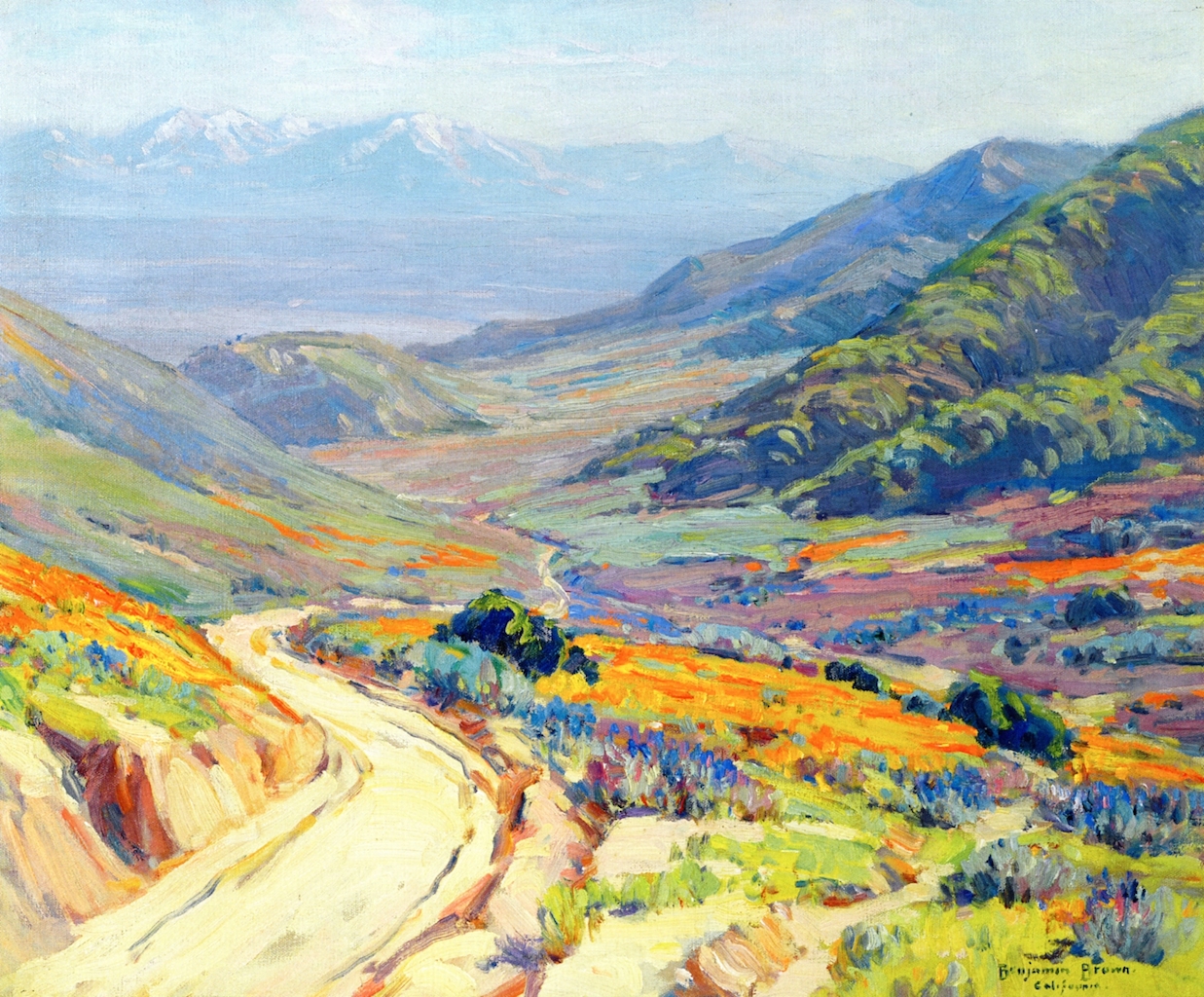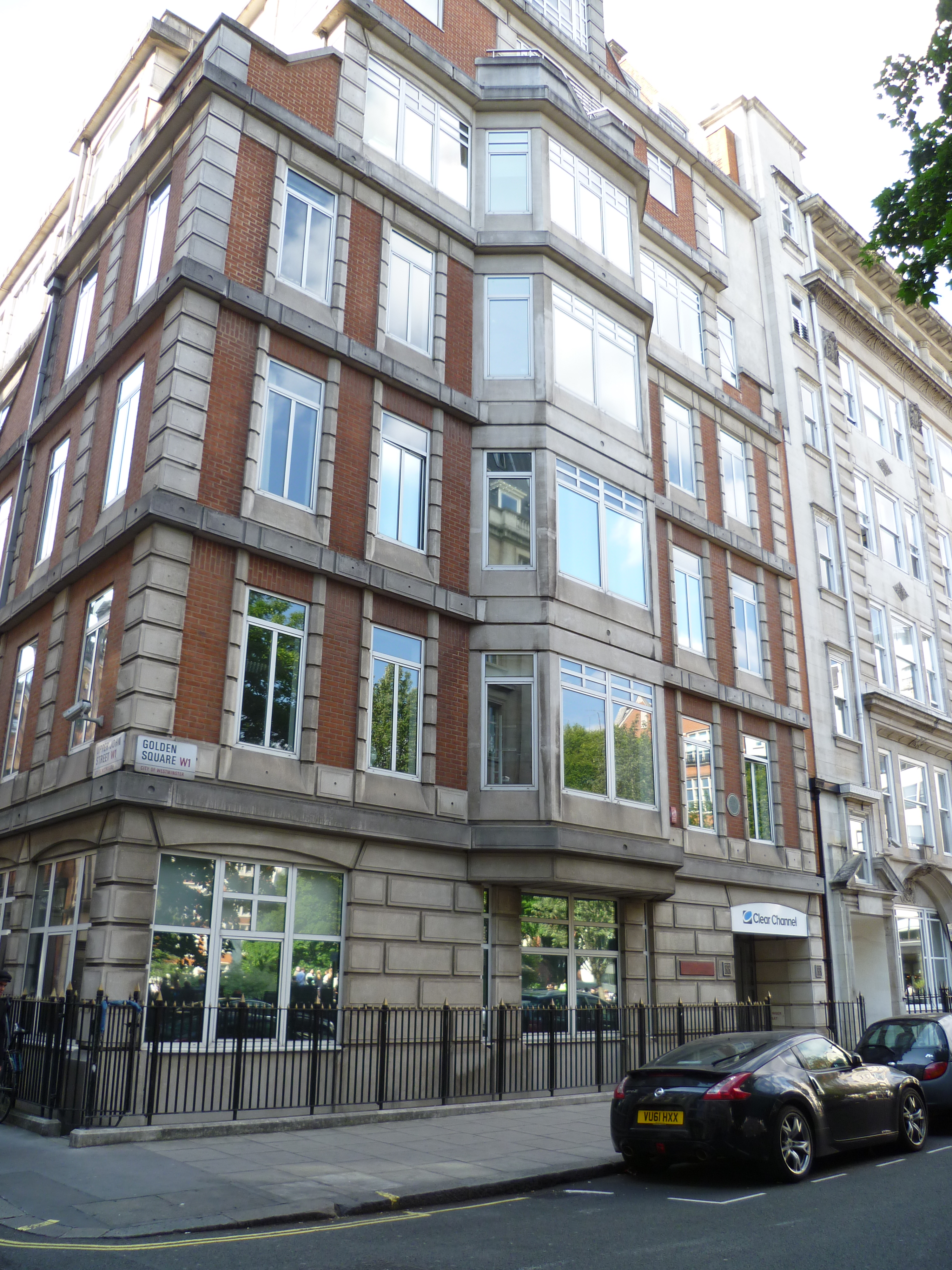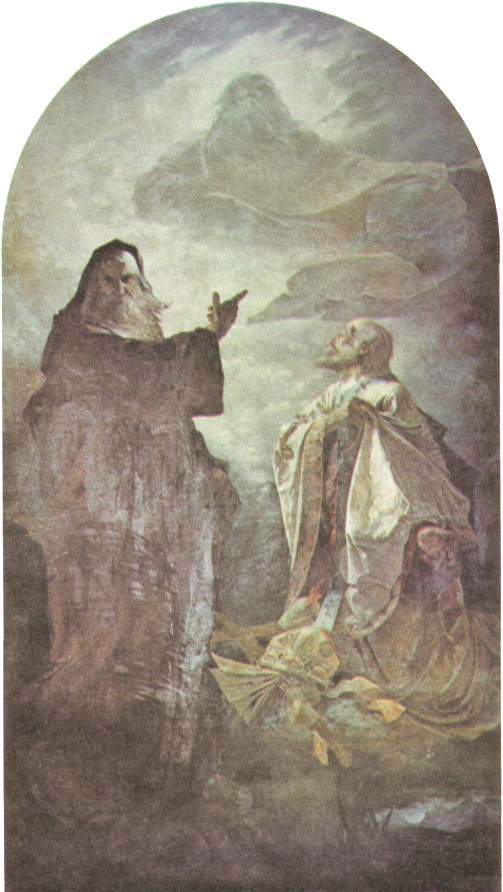|
Arny Karl
Arny Karl (birth name: Arnold Helmut Karl) (July 31, 1940 - February 15, 2000) was one of the key artists in the early stages of the California Plein-Air Revival, which started in the 1980s and continues to this day. Along with Tim Solliday (b. 1952) and Peter Seitz Adams (b. 1950), Karl helped revitalize the use of pastels to paint outdoors or en plein air, as the French described regarding the practice of working directly from nature. Karl was a student of Theodore Lukits (1897–1992), who was a prominent California Impressionist and the best known Early California painter to have worked in pastel. His work has been included in a number of museum exhibitions, is represented in a number of prominent public and private collections and has been the subject of a number of curatorial essays. Early life Karl was born in South Tyrol, Italy to an Austrian father, Anton Karl (1899–1984) and an Italian mother, Rosa Maria Adami (1911–1966). His father was a minister and a writer, but ... [...More Info...] [...Related Items...] OR: [Wikipedia] [Google] [Baidu] |
California Plein-Air Revival
The terms California Impressionism and California Plein-Air Painting describe the large movement of 20th century California artists who worked out of doors (''en plein air''), directly from nature in California, United States. Their work became popular in the San Francisco Bay Area and Southern California in the first three decades after the turn of the 20th century. Considered to be a regional variation on American Impressionism, the California Impressionists are a subset of the California Plein-Air School. History The California Impressionist artists depicted the California landscape from the south to the north — the foothills, mountains, seashores, and deserts of the interior and coastal regions. California Impressionism reached its peak of popularity in the years before the Great Depression. The California Impressionists generally painted in a bright, chromatic palette with loose, painterly brush work that showed influence from French Impressionism and Post-Impressionism. The ... [...More Info...] [...Related Items...] OR: [Wikipedia] [Google] [Baidu] |
Clear Channel Outdoor
Clear Channel Outdoor Americas (CCOA) is an out-of-home (OOH) advertising company based in New York City with operations throughout the U.S. and the Caribbean. CCOA is one of two separate business units operating as part of Clear Channel Outdoor Holdings, Inc. (CCOH). The other business unit, Clear Channel International (CCI), includes, Europe, Singapore and Latin America. Globally, both CCOA and CCI employ 5,800 people. Following a separation from its former parent company, iHeartMedia, Inc., in May 2019, CCOH, Inc., has operated as an independent, publicly traded company on the New York Stock Exchange (NYSE: CCO). In the U.S., Clear Channel Outdoor Americas offers outdoor advertising in 43 of the top 50 markets and maintains an office and operations presence employing over 1,500 people. Across its roadside and street level market footprint, CCOA offers tens of thousands of printed billboards in a variety of formats. History Founding and predecessor companies Clear Channe ... [...More Info...] [...Related Items...] OR: [Wikipedia] [Google] [Baidu] |
Edmund H
Edmund is a masculine given name or surname in the English language. The name is derived from the Old English elements ''ēad'', meaning "prosperity" or "riches", and ''mund'', meaning "protector". Persons named Edmund include: People Kings and nobles * Edmund the Martyr (died 869 or 870), king of East Anglia * Edmund I (922–946), King of England from 939 to 946 *Edmund Ironside (989–1016), also known as Edmund II, King of England in 1016 *Edmund of Scotland (after 1070 – after 1097) *Edmund Crouchback (1245–1296), son of King Henry III of England and claimant to the Sicilian throne *Edmund, 2nd Earl of Cornwall (1249–1300), earl of Cornwall; English nobleman of royal descent * Edmund of Langley, 1st Duke of York (1341–1402), son of King Edward III of England * Edmund Tudor, earl of Richmond (1430–1456), English and Welsh nobleman * Edmund, Prince of Schwarzenberg (1803–1873), the last created Austrian field marshal of the 19th century In religion * Saint Edmund ... [...More Info...] [...Related Items...] OR: [Wikipedia] [Google] [Baidu] |
Alphonse Mucha
Alfons Maria Mucha (; 24 July 1860 – 14 July 1939), known internationally as Alphonse Mucha, was a Czech painter, illustrator and graphic artist, living in Paris during the Art Nouveau period, best known for his distinctly stylized and decorative theatrical posters, particularly those of Sarah Bernhardt. He produced illustrations, advertisements, decorative panels, as well as designs, which became among the best-known images of the period. In the second part of his career, at the age of 57, he returned to his homeland and devoted himself to a series of twenty monumental canvases known as ''The Slav Epic'', depicting the history of all the Slavic peoples of the world, which he painted between 1912 and 1926. In 1928, on the 10th anniversary of the Czechoslovak declaration of independence, independence of Czechoslovakia, he presented the series to the Czech nation. He considered it his most important work. Early life Mucha was born on 24 July 1860 in the small town of Ivančice ... [...More Info...] [...Related Items...] OR: [Wikipedia] [Google] [Baidu] |
Art Institute Of Chicago
The Art Institute of Chicago in Chicago's Grant Park, founded in 1879, is one of the oldest and largest art museums in the world. Recognized for its curatorial efforts and popularity among visitors, the museum hosts approximately 1.5 million people annually. Its collection, stewarded by 11 curatorial departments, is encyclopedic, and includes iconic works such as Georges Seurat's ''A Sunday on La Grande Jatte'', Pablo Picasso's ''The Old Guitarist'', Edward Hopper's '' Nighthawks'', and Grant Wood's '' American Gothic''. Its permanent collection of nearly 300,000 works of art is augmented by more than 30 special exhibitions mounted yearly that illuminate aspects of the collection and present cutting-edge curatorial and scientific research. As a research institution, the Art Institute also has a conservation and conservation science department, five conservation laboratories, and one of the largest art history and architecture libraries in the country—the Ryerson and B ... [...More Info...] [...Related Items...] OR: [Wikipedia] [Google] [Baidu] |
Leon Bonnat
Leon, Léon (French) or León (Spanish) may refer to: Places Europe * León, Spain, capital city of the Province of León * Province of León, Spain * Kingdom of León, an independent state in the Iberian Peninsula from 910 to 1230 and again from 1296 to 1301 * León (historical region), composed of the Spanish provinces León, Salamanca, and Zamora * Viscounty of Léon, a feudal state in France during the 11th to 13th centuries * Saint-Pol-de-Léon, a commune in Brittany, France * Léon, Landes, a commune in Aquitaine, France * Isla de León, a Spanish island * Leon (Souda Bay), an islet in Souda Bay, Chania, on the island of Crete North America * León, Guanajuato, Mexico, a large city * Leon, California, United States, a ghost town * Leon, Iowa, United States * Leon, Kansas, United States * Leon, New York, United States * Leon, Oklahoma, United States * Leon, Virginia, United States * Leon, West Virginia, United States * Leon, Wisconsin (other), United States, several ... [...More Info...] [...Related Items...] OR: [Wikipedia] [Google] [Baidu] |
Jean-Léon Gérôme
Jean-Léon Gérôme (11 May 1824 – 10 January 1904) was a French painter and sculptor in the style now known as academicism. His paintings were so widely reproduced that he was "arguably the world's most famous living artist by 1880." The range of his oeuvre included historical painting, Greek mythology, Orientalism, portraits, and other subjects, bringing the academic painting tradition to an artistic climax. He is considered one of the most important painters from this academic period. He was also a teacher with a long list of students. Early life Jean-Léon Gérôme was born at Vesoul, Haute-Saône. He went to Paris in 1840 where he studied under Paul Delaroche, whom he accompanied to Italy in 1843. He visited Florence, Rome, the Vatican and Pompeii. On his return to Paris in 1844, like many students of Delaroche, he joined the atelier of Charles Gleyre and studied there for a brief time. He then attended the École des Beaux-Arts. In 1846 he tried to enter the prestigio ... [...More Info...] [...Related Items...] OR: [Wikipedia] [Google] [Baidu] |
William-Adolphe Bouguereau
William-Adolphe Bouguereau (; 30 November 1825 – 19 August 1905) was a French academic painter. In his realistic genre paintings, he used mythological themes, making modern interpretations of classical subjects, with an emphasis on the female human body. During his life, he enjoyed significant popularity in France and the United States, was given numerous official honors, and received top prices for his work. As the quintessential salon painter of his generation, he was reviled by the Impressionist avant-garde. By the early twentieth century, Bouguereau and his art fell out of favor with the public, due in part to changing tastes. In the 1980s, a revival of interest in figure painting led to a rediscovery of Bouguereau and his work. He finished 822 known paintings, but the whereabouts of many are still unknown. Life and career Formative years William-Adolphe Bouguereau was born in La Rochelle, France, on 30 November 1825, into a family of wine and olive oil merchants.Wissman ... [...More Info...] [...Related Items...] OR: [Wikipedia] [Google] [Baidu] |
Atelier Method
An atelier () is the private workshop or studio of a professional artist in the fine or decorative arts or an architect, where a principal master and a number of assistants, students, and apprentices can work together producing fine art or visual art released under the master's name or supervision. Ateliers were the standard vocational practice for European artists from the Middle Ages to the 19th century, and common elsewhere in the world. In medieval Europe this way of working and teaching was often enforced by local guild regulations, such as those of the painters' Guild of Saint Luke, and of other craft guilds. Apprentices usually began working on simple tasks when young, and after some years with increasing knowledge and expertise became journeymen, before possibly becoming masters themselves. This master-apprentice system was gradually replaced as the once powerful guilds declined, and the academy became a favored method of training. However, many professional artists c ... [...More Info...] [...Related Items...] OR: [Wikipedia] [Google] [Baidu] |
École Des Beaux-Arts
École des Beaux-Arts (; ) refers to a number of influential art schools in France. The term is associated with the Beaux-Arts style in architecture and city planning that thrived in France and other countries during the late nineteenth century and the first quarter of the twentieth century. The most famous and oldest École des Beaux-Arts is the École nationale supérieure des Beaux-Arts in Paris, now located on the city's left bank across from the Louvre, at 14 rue Bonaparte (in the 6th arrondissement). The school has a history spanning more than 350 years, training many of the great artists in Europe. Beaux-Arts style was modeled on classical "antiquities", preserving these idealized forms and passing the style on to future generations. History The origins of the Paris school go back to 1648, when the Académie des Beaux-Arts was founded by Cardinal Mazarin to educate the most talented students in drawing, painting, sculpture, engraving, architecture and other media. Loui ... [...More Info...] [...Related Items...] OR: [Wikipedia] [Google] [Baidu] |
Studio
A studio is an artist or worker's workroom. This can be for the purpose of acting, architecture, painting, pottery (ceramics), sculpture, origami, woodworking, scrapbooking, photography, graphic design, filmmaking, animation, industrial design, radio or television production broadcasting or the making of music. The term is also used for the workroom of dancers, often specified to dance studio. The word ''studio'' is derived from the , from , from ''studere'', meaning to study or zeal. The French term for studio, ''atelier'', in addition to designating an artist's studio is used to characterize the studio of a fashion designer. ''Studio'' is also a metonym for the group of people who work within a particular studio. :uz:Studiya Art studio The studio of any artist, especially from the 15th to the 19th centuries, characterized all the assistants, thus the designation of paintings as "from the workshop of..." or "studio of..." An art studio is sometimes called an atelier, ... [...More Info...] [...Related Items...] OR: [Wikipedia] [Google] [Baidu] |
Hancock Park
Hancock Park is a city park in the Miracle Mile section of the Mid-Wilshire neighborhood in Los Angeles, California. The park's destinations include the La Brea Tar Pits; the adjacent George C. Page Museum of La Brea Discoveries, which displays the fossils of Ice Age prehistoric mammals from the tar pits; and the Los Angeles County Museum of Art (LACMA) complex. They are among the most popular tourist attractions in Los Angeles. Features The park has urban open spaces and landscaped areas for walking, picnicking, and other recreation. Located on Wilshire Boulevard just east of Fairfax Avenue, it extends across a large city block and around two museums. The landmark Park La Brea complex is across 6th Street on the north. The Hancock Park neighborhood, is approximately to the northeast. Hancock Park is the location of the La Brea Tar Pits, the George C. Page Museum of La Brea Discoveries overseen by the Natural History Museum of Los Angeles County, and the Los Angeles Co ... [...More Info...] [...Related Items...] OR: [Wikipedia] [Google] [Baidu] |








